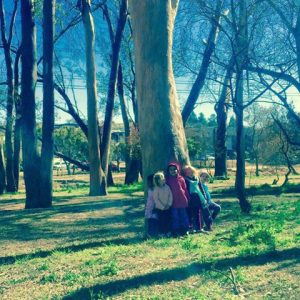By Julia Gorham
No one can emphasize enough the importance of brain development in early childhood education. Today’s developing technology and research have allowed us to learn more about the brain, how it works, and the critical periods for its development. We now know that through research an enriched learning environment actually increases brain size (Diamond and Hopson, 1998). There is a new growing interest in developmental neuropsychology, or research in brain development.
It has been discovered that the first six years of one’s life is significant for the brain to develop fully. Most importantly Montessori’s vision applies to brain development. There is new research that coincides with the discovery that the foundation of neural structures in the frontal lobes of the human brain isn’t fully developed until approximately the age of twenty-four. This states that the brain continually develops and that adults and parents who provide the immediate environment of the child can do something to make this experience positive. In order to achieve this full potential a human being needs interaction with the immediate environment and sensorial awareness. This is evident with the child’s growing independence, coordinated movements, language, and developed will (Lillard and Jessen, 2003).
So now the question therefore is “how do we best help children achieve the full potential of development of the brain?” There are several ways to achieve this according to Diamond and Hopson. They define an enriched environment as one that includes a steady source of environmental support, nutritious diet, stimulates all senses, atmosphere free from stress and enjoyable, and challenging, allows social interaction, promotes development, and gives the child a chance to assess the results of their actions, all in all allows the child to be an active participant rather than a passive observer (Diamond and Hopson, 1998).
This idea is reflected in what Montessori perceives to be a prepared environment. The prepared environment allows the link for a child to reach into his world. Montessori defines a prepared environment to consider the specific needs of the child with reference to their age of development, it provides the child what they need in order to live, such as physical and emotional security, it should be aesthetically pleasing and inviting this includes hygiene and appropriate furniture, and it has to have order and should reflect the interest the adult has with the child. These are her main ideas but she also mentions that the environment has to allow freedom of choice, allows the child to act independently, and allows the child to learn to take responsibility for his actions. What Diamond and Hopson define as an enriched environment to stimulate brain development is similar to the prepared environment of Montessori.
To become an active participant what better way to involve children than movement. Movement is now realized to be helpful and even essential for increasing learning, develop creative thought and a high level of reasoning (Hannaford). Movement has been said to improve the brain functions by improving the interconnections between the two brain hemispheres. We know that the left side of the brain controls the right side of your body, so when you move the opposite arm and leg you are stimulating your brain to develop more neural pathways that ultimately help the brain function better.
Movement has also been discovered to strengthen the basal ganglia, cerebellum (coordinates muscle contraction), and corpus collosum (a fibrous bundle of axons connecting the 2 brain hemispheres). It also increases the production of neurotrophins, the natural neural growth factor between the two brain hemispheres (Lyons) and increase myelination. Myelination is an important process for brain development as it helps with better brain function.
(Diamond and Hopson, 1998).
Get your child to move for optimum brain development!




